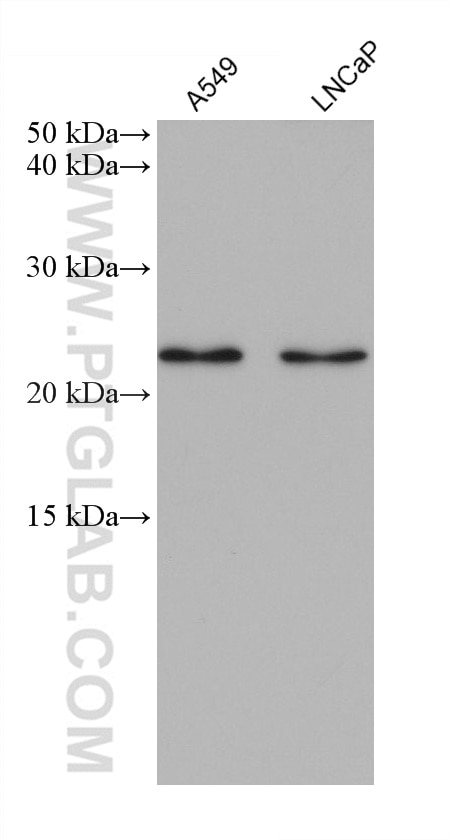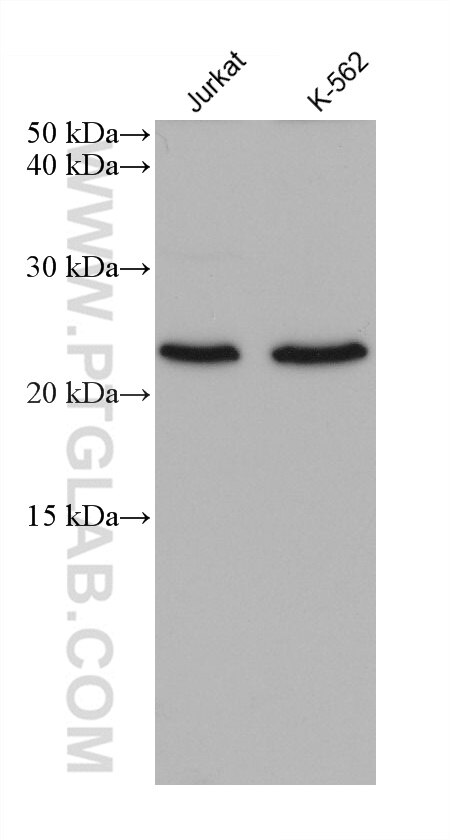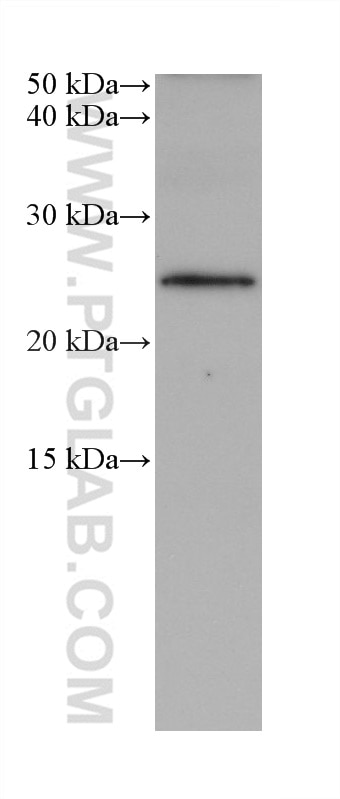Tested Applications
| Positive WB detected in | A549 cells, Jurkat cells, A2780 cells, LNCap cells, K-562 cells |
Recommended dilution
| Application | Dilution |
|---|---|
| Western Blot (WB) | WB : 1:2000-1:10000 |
| It is recommended that this reagent should be titrated in each testing system to obtain optimal results. | |
| Sample-dependent, Check data in validation data gallery. | |
Product Information
68546-1-Ig targets RPAIN in WB, ELISA applications and shows reactivity with human samples.
| Tested Reactivity | human |
| Host / Isotype | Mouse / IgG1 |
| Class | Monoclonal |
| Type | Antibody |
| Immunogen |
CatNo: Ag7844 Product name: Recombinant human RPAIN protein Source: e coli.-derived, PET28a Tag: 6*His Domain: 1-145 aa of BC004451 Sequence: MAESLRSPRRSLYKLVGSPPWKEAFRQRCLERMRNSRDRLLNRYRQAGSSGPGNSQNSFLVQEVMEEEWNALQSVENCPEDLAQLEELIDMAVLEEIQQELINQEQSIISEYEKSLQFDEKCLSIMLAEWEANPLICPVCTNLLS Predict reactive species |
| Full Name | RPA interacting protein |
| Calculated Molecular Weight | 25 kDa |
| Observed Molecular Weight | 25 kDa |
| GenBank Accession Number | BC004451 |
| Gene Symbol | RPAIN |
| Gene ID (NCBI) | 84268 |
| RRID | AB_3085251 |
| Conjugate | Unconjugated |
| Form | Liquid |
| Purification Method | Protein G purification |
| UNIPROT ID | Q86UA6 |
| Storage Buffer | PBS with 0.02% sodium azide and 50% glycerol, pH 7.3. |
| Storage Conditions | Store at -20°C. Stable for one year after shipment. Aliquoting is unnecessary for -20oC storage. 20ul sizes contain 0.1% BSA. |
Background Information
Replication protein A (RPA) is a eukaryotic single-stranded DNA binding protein that is essential for DNA replication, repair, and recombination, and human RPA interacting protein α (hRIPα) is the nuclear transporter of RPA. RPAIN was originally identified as a nuclear transporter of RPA in Xenopus (PMID: 23010595). The human RIPα gene encodes several splice isoforms, of which hRIPα and hRIPβ are the major translation products in vivo.hRIPα transports RPA into the nucleus by shuttling between the cytoplasm and nucleus while hRIPβ is localized in promyelocytic leukemia (PML) nuclear bodies.
Protocols
| Product Specific Protocols | |
|---|---|
| WB protocol for RPAIN antibody 68546-1-Ig | Download protocol |
| Standard Protocols | |
|---|---|
| Click here to view our Standard Protocols |








